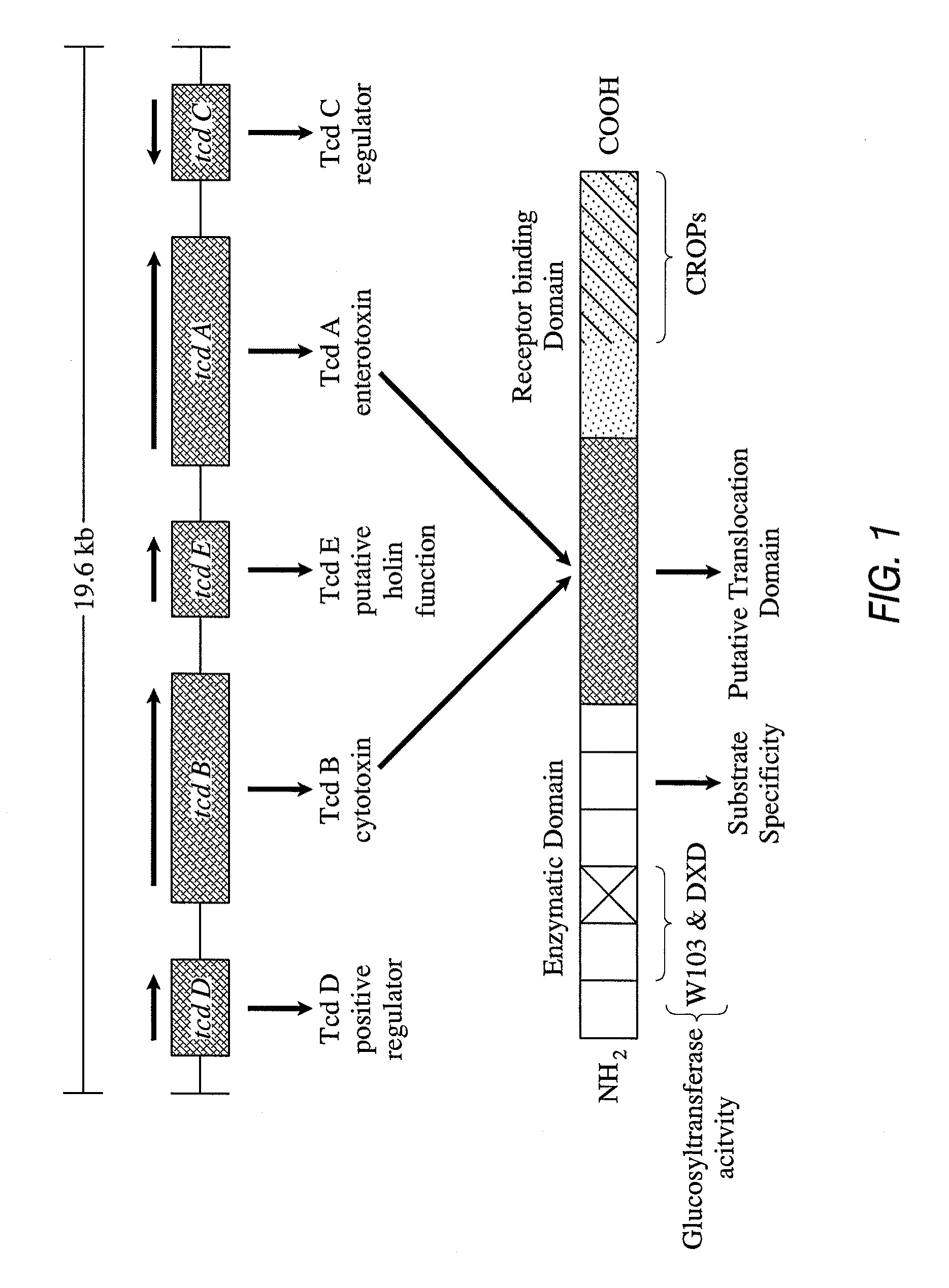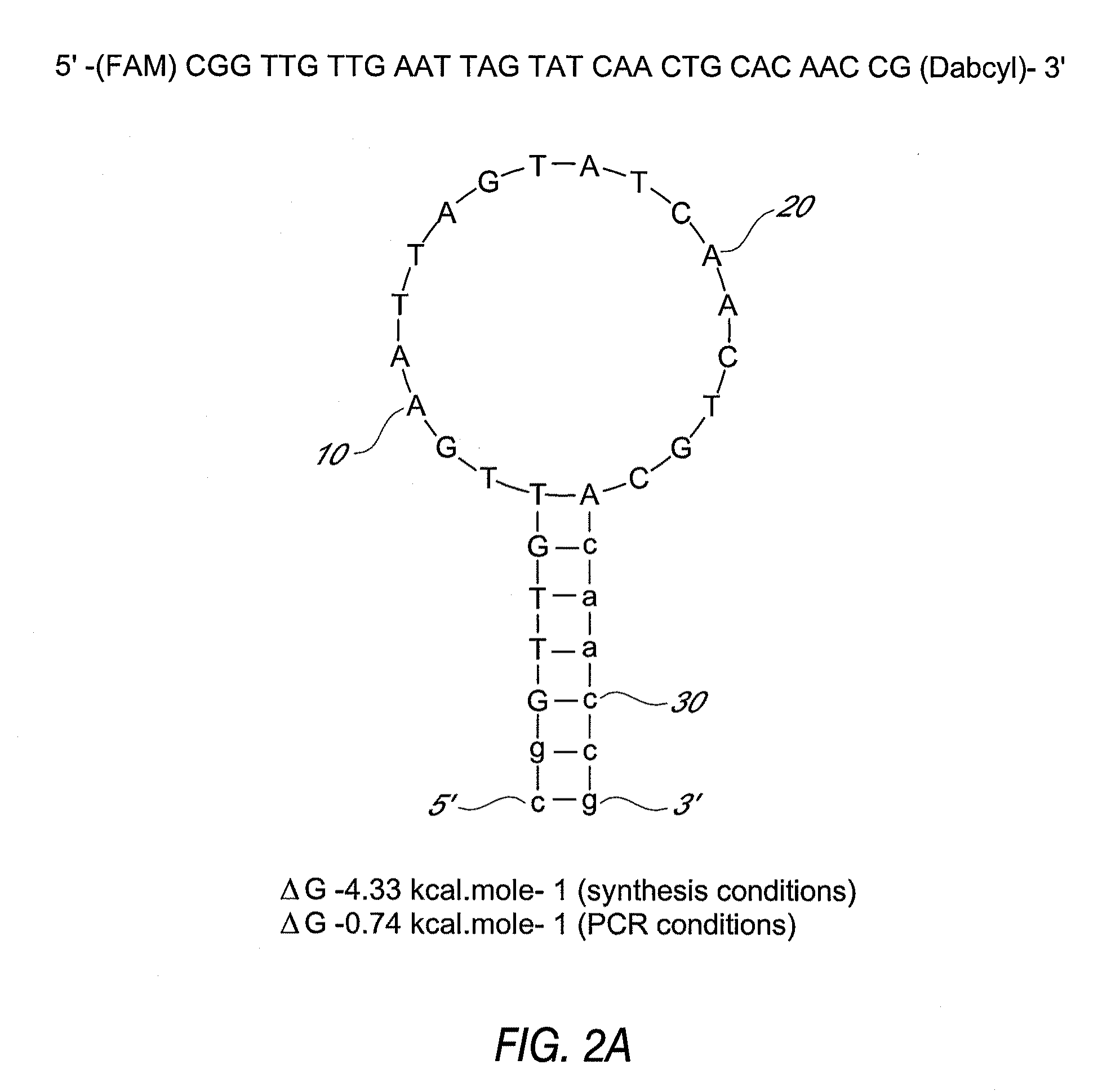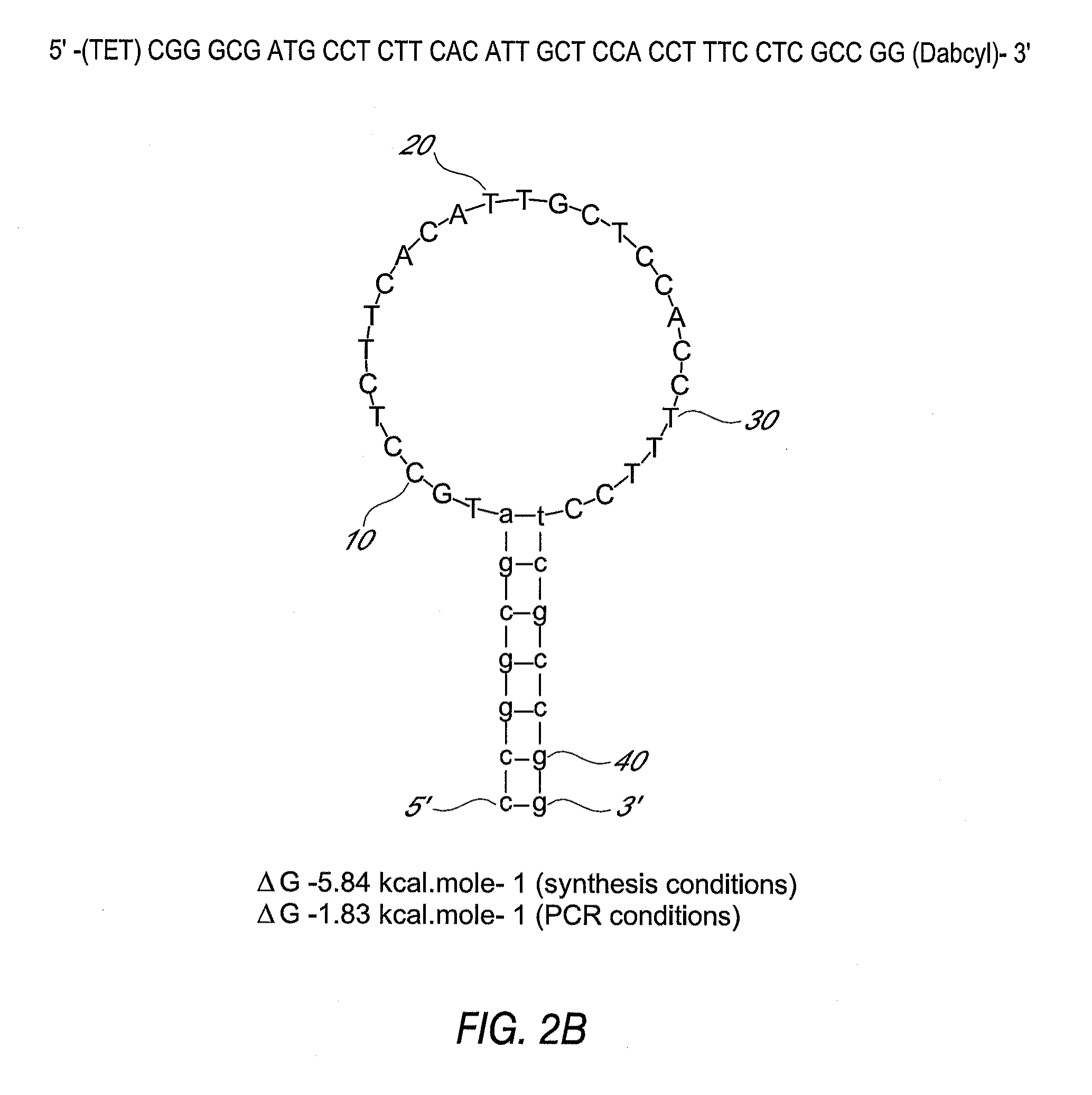Detection of toxigenic strains of clostridium difficile
a technology of clostridium difficile and probes, which is applied in the field of detection of toxin-producing (toxigenic) strains of clostridium difficile, can solve the problems of affecting the normal function of the body, and increasing the risk of developing the diseas
- Summary
- Abstract
- Description
- Claims
- Application Information
AI Technical Summary
Benefits of technology
Problems solved by technology
Method used
Image
Examples
Embodiment Construction
[0021]The present invention relates to the detection of toxigenic strains of Clostridium difficile using particular primers and probes that bind to the toxin B (TcdB) gene of C. difficile. These primers and probes are used to amplify C. difficile nucleic acids in clinical samples to determine the presence of toxogenic strains.
[0022]As used herein, “template” refers to all or part of a polynucleotide containing at least one target nucleotide sequence.
[0023]As used herein, a “target nucleotide sequence” includes the nucleotide sequence of the final product having defined sequence and length, and may include other nucleotide sequences that are removed during post-amplification processing of the amplification product. Nucleotide sequences that are found in the target nucleotide sequence and later removed may include binding sites (annealing sites) for primers or probes, nucleotides involved in conversion of double-stranded DNA to single-stranded DNA, or sequences useful as recognition a...
PUM
| Property | Measurement | Unit |
|---|---|---|
| Fraction | aaaaa | aaaaa |
| Fluorescence | aaaaa | aaaaa |
Abstract
Description
Claims
Application Information
 Login to View More
Login to View More - R&D
- Intellectual Property
- Life Sciences
- Materials
- Tech Scout
- Unparalleled Data Quality
- Higher Quality Content
- 60% Fewer Hallucinations
Browse by: Latest US Patents, China's latest patents, Technical Efficacy Thesaurus, Application Domain, Technology Topic, Popular Technical Reports.
© 2025 PatSnap. All rights reserved.Legal|Privacy policy|Modern Slavery Act Transparency Statement|Sitemap|About US| Contact US: help@patsnap.com



